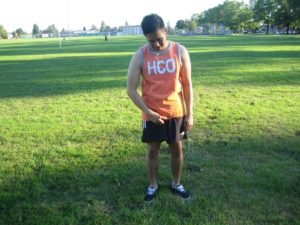Sports hernia is considered as a broad term that describes the pain in the lower abdomen or upper groin area. Take note that it does not always include an actual hernia, but it can vary. It is also described as the tearing of the posterior abdominal wall. Even the pelvic floor and groin musculature can be involved.
A sports hernia is an overuse injury that is due to a strain, torn or weak wall in the lower abdomen. Unlike with an inguinal hernia in which part of the intestine pushes through the abdominal wall, a sports hernia can cause a lot of pain but it does not protrude through the wall. A diagnosis could not be easily determined since the symptoms are comparable to a groin pull injury, abdominal muscle that is strained or other injuries to the lower trunk. Understandably, a diagnosis is done in order to rule out other sources of pain.
Surgery might be the only assured method in order to confirm a diagnosis. Nevertheless, other tests can also be performed in order to determine if other possible conditions are present. The commonly used diagnostic tools include imaging and the assessment for the presence of stress fractures, muscular tears, strains and pain.
How sports hernias occur
Based on studies, there are only theories on how a sports hernia can develop, but the most common is the overuse of the thigh and the lower abdominal muscles which results to the weakness or tear on the back muscle wall of the groin.
The injury is triggered by abrupt movements, turning, twisting, bending forward, sprinting, sit-ups and kicking. In reality, the pain that manifests while performing sit-ups can indicate that a sports hernia is present.
Who are at risk for sports hernia?

Due to the nature of certain sports such as tennis and hockey, it puts individuals at risk for the injury. Even runners, skiers and hurdlers face a certain degree of risk for getting the injury. Additionally, men are more likely to get sports hernia but it can occur to anyone.
What are the symptoms of sports hernia?
If sports hernia is suspected, the following symptoms are likely to manifest.
- Pain in the groin area, testicles or lower abdomen
- Pain that typically affects only one side of the groin area
- Pain in the groin or lower abdomen that lasts for weeks or even months
- Severe pain when twisting, accelerating, turning, coughing, lifting and sneezing
Take note that these symptoms gradually occur among individuals who engage in running.
Treatment for sports hernia
Enrolling in a first aid course can help out a lot if family members or friends engage in any sports since you know what to do in case of injuries. For sports hernia, the initial measure is to instruct the individual to rest and avoid activities that triggered the pain.
Apply an ice pack or cold compress for 15-20 minutes every session for 3-4 times in a day. You can also provide over-the-counter medications such as naproxen, aspirin or ibuprofen to relieve the pain and minimize the swelling.
It is best to consult a doctor if an injury results to groin pain or if the pain present in the groin developed without any cause. In case these measures are not effective, the only solution is surgery. On the other hand, even surgery will not ensure that the sports hernia will not develop again.
